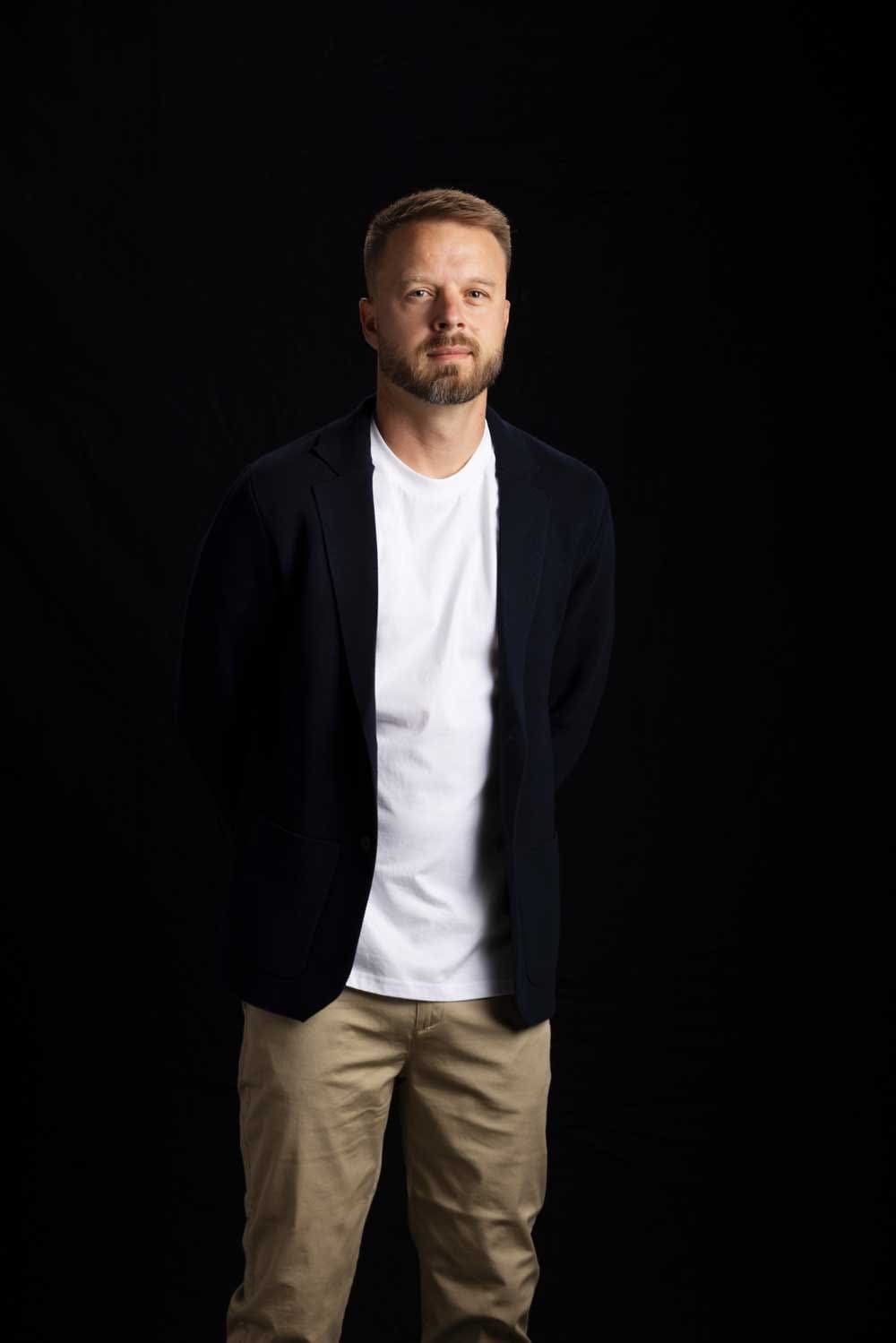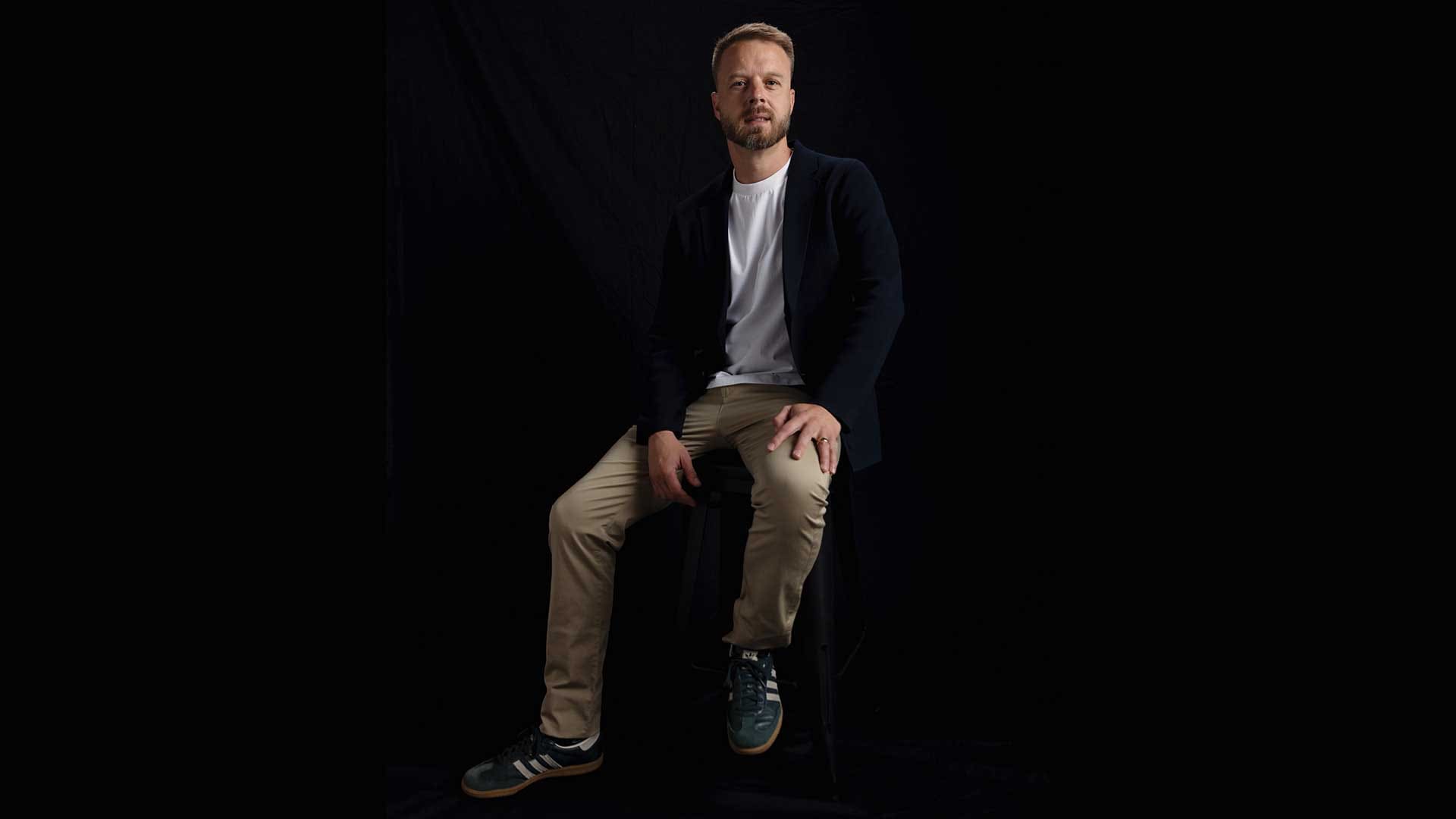The Dynamo6 Effect
When Igor Matich arrived in New Zealand as a 14-year-old immigrant from war-torn Croatia, he didn’t speak English, didn’t know anyone, and had no idea what the future held. But what he did have was perspective, an understanding of risk, resilience, and what really matters. It’s that same clarity that’s guided him from navigating a new life as a teenager to leading a fast-growing tech consultancy.
As founder and executive director of Dynamo6, Igor has spent the last decade helping organisations embrace change, rethink how they work, and adopt technology not as a shiny add-on, but as a core enabler of culture, capability, and progress.
There’s a link between that and Dynamo6 and football right?
Yeah, there is. Growing up in Croatia, football was life. My team was Dinamo Zagreb, so there’s a bit of a nod to that in the name. It’s kind of in the background. Also, Dynamo as a word represents energy and innovation, which aligned with what I wanted the company to be about. It wasn’t just a technical name. It had to mean something. And the “6” is really about connection, the six degrees of separation idea. Especially now, with how connected the world is, I wanted to reflect that idea in a simple, memorable way.
You came to New Zealand from Croatia in 1995?
Yeah, I was 14. We left during the war in Croatia. I was born in what was then Yugoslavia. We lived through four years of war before we emigrated. Coming to New Zealand was a massive shift. I didn’t speak English. I was just dropped into school and had to learn by immersion. It was very sink or swim. I think those early experiences formed a lot of who I am now, being thrown into uncertainty and having to adapt.
That must’ve been incredibly formative. Do you think those experiences gave you a different perspective when it comes to risk in business?
Absolutely. I remember being in a room as a CTO in my early thirties, and someone asked me how I had the confidence to speak up to a board when everyone else in the room was older than me. I said, “Well, I’ve lived through war. What’s the worst that’s going to happen in a board meeting?” It shifts your threshold for fear. I’m not saying it makes you reckless. But it does give you clarity. You learn to separate what’s truly dangerous from what’s just uncomfortable. In business, that’s a big asset.
You’ve also been recognised globally, like in the Financial Times high-growth company rankings. Do you think your background gives you an edge?
I think coming from an immigrant background definitely shapes your attitude. When you arrive in a new country with nothing, you understand the value of opportunity. New Zealand is a place where, if you’re hungry, honest, and work hard, you can do really well. I don’t think everyone realises how rare that is globally. That perspective gave me a sense of urgency early on, a drive to make something meaningful.
What about your own kids, do you think they’ll have that same hunger?
That’s the challenge. I’ve got four kids. They’re growing up in a very different context to how I did. They’ve got more security, more comfort. And I want that for them, of course I do. But I also think about how to give them the kind of grit that comes from struggle. I try to encourage curiosity and resilience. That’s probably the modern version of hunger.
Do you think New Zealand has what it takes to compete on a global stage?
Yes, without a doubt. The number eight wire mentality is real. People here are resourceful. We don’t have huge teams or bottomless budgets, so we’re used to finding smart solutions. I think our multicultural makeup helps too. We’re good at relating to different people, which matters when you’re building for global users. What we sometimes lack is belief. I think we underestimate how innovative we actually are.
AI is the current zeitgeist. Do you see us playing a role there?
I don’t think we’re going to build the next ChatGPT out of New Zealand, not because we lack the talent, but because we don’t have the scale or capital. But where we can absolutely lead is in application. Using AI in really targeted, smart ways, especially in industries we’re strong in, like agri-tech. I’m more interested in solving a real-world problem with AI than trying to build the next big model.
What’s your process when working with a new client?
First thing, we don’t start with the tech. We start by understanding the problem. We’ll go through a “five whys” approach. You’d be amazed how often the problem people come in with isn’t the actual issue. Someone says, “We need AI,” but really, they’ve just got a messy data structure or manual processes that need streamlining. Once you get to the real challenge, the solution usually becomes obvious. And sometimes the right solution doesn’t involve AI at all.
What are some examples of where you’ve seen this work well?
New Zealand has some great examples, from a company building agricultural robots, machines that use UV light to kill weeds instead of using chemicals. The robots use AI to see the weeds and navigate through the crops. It’s a very practical use of technology using image recognition systems that were trained and deployed in real-world conditions. That’s a good example of how AI is being used quietly to solve a real problem.
We’ve also done work helping organisations search through unstructured data. One client had terabytes of internal documentation, but no way to surface insights. We used machine learning to make it searchable and tag content properly. It didn’t make headlines, but it made a huge difference to how they operated.

Has AI inspired more businesses to look at efficiency?
Absolutely. Even if they don’t end up using it directly, it’s got people asking better questions. Suddenly businesses are looking at how they can streamline what they do. They’re looking at manual tasks and asking if there’s a more innovative way. That’s a good thing. The conversation around AI is forcing people to think differently.
And in terms of adoption, where is the main inertia?
A big one is organisational readiness. A lot of companies say they want AI or cloud solutions, but their internal systems aren’t ready. They’re still on-premise. Their data’s not clean or centralised. And then there’s internal inertia, people don’t like change. There’s fear around job security. There are long review cycles for new tools. We’ve seen AI-related projects delayed by five months just to get through legal.
Also, some leadership teams aren’t aligned. One part of the business wants to innovate, another part is risk-averse. If you don’t have alignment, things stall. And if staff don’t feel they’re part of the journey, they’ll resist it.
Do you think every business needs to think like a tech business now, to have a more fluid org structure which lends itself to innovation adoption?
They do, at least tech-enabled. Every business, no matter what they do, relies on systems. It could be a bakery or a law firm, if you’re not leveraging tech to improve how you work or interact with customers, you’re leaving value on the table. That doesn’t mean you need to go build an app. But it does mean you need to ask, “Are we using the right tools? Are we making it easy for our people to do great work?”
What have you learned about building a culture of change at Dynamo6?
That it takes time and trust. You can’t just tell people to innovate. You have to give them room. If someone fails while trying something new, they need to know they’re not going to get punished. That’s psychological safety. It’s key. The other part is balance. Not everyone in the team needs to be pushing for the next shiny thing. You also need people who are steady, consistent, reliable. It’s like football, you need strikers and defenders. You need the right roles for the right moments.
What’s been your biggest personal learning since founding Dynamo6?
That change in organisations is slow. Technology moves fast, but adoption doesn’t. You can be absolutely right about where things are going, and still too early. Timing matters. I used to get frustrated when clients didn’t move faster. Now I’ve learned to meet them where they are. Sometimes the best thing we can do is just start the conversation, plant the seed, and wait for the right moment.
And on a personal level, leadership is more emotional than I expected. You think it’s about making decisions and setting strategy. But really, it’s about people. Listening, supporting, being available. That’s the part that matters most and is often the hardest to scale.
Has it been worth it?
Without question. There were tough periods, especially early on. I was a solo founder, bootstrapping the business, with young kids at home. There were nights I didn’t sleep. But I never considered quitting. I knew why I was doing it. The chance to build something I believed in, with people I believed in, that made it all worth it. I couldn’t go back to being an employee now. It’s not about control. It’s about purpose.
What’s your top tech hack that’s helped your day-to-day?
I use transcription and summarisation all the time. I don’t like taking notes during meetings, it breaks my focus. So I’ll record a session, run it through an AI tool, and get a summary. Same with long documents or reports. That’s been a big efficiency gain. My team also uses AI tools to assist with document writing, like project plans or templated responses. They still check everything, of course, but it saves time.
For a business that knows it needs to improve its tech but doesn’t know where to start, what’s your advice?
Be curious. Keep asking questions. If your IT provider can’t explain things clearly, talk to your peers. Ask why work systems are so clunky when your personal tech life is easy. Use Gemini or Copilot to start exploring. And most importantly, find someone you can trust who knows tech and wants to help you succeed.


